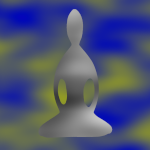Dear Friends,
This poem brings me a smile:
One Attempt at Efficiency
after an idea planted by Gabrielle Louise
it never works
~ Rosemerry Wahtola Trommer
this trying to exhale and inhale
at the same time
https://ahundredfallingveils.com/2016/02/06/one-attempt-at-efficiency/
One of the most common ways to cultivate mindfulness is by turning attention towards the breath. This is something we can do any time, any place, and is generally an accessible to many people, which is why this practice is often introduced first. And yet, the breath can be incredibly subtle, so that we can continue to use this as an anchor in our practice, no matter how experienced.
Physiologically, breathing also has benefits of calming the mind and body. When I’m nervous or stressed, I automatically will take a deep breath, and I can feel my body relax. At times, if I’m not tuned into my emotions, paying attention to breathing can clue me in – oh, the breath is shallow and tight right now, what’s going on here?
In this practice, we pay attention to the physical sensations of breathing as they are naturally occurring. We don’t need to follow any particular style or pattern. Whatever the body is doing – a short breath or a long breath, deep or shallow, however it is in this moment.
We start by resting attention where the sensations of breathing are felt most obviously. That could be where the breath enters and exits at the nostrils, or it could be the rise and fall of the shoulders, or the expansion and contraction of the ribcage, or the movement in the belly, or the wave like motion of the body… If nothing seems obvious, we can rest a hand on our belly or chest to notice how the hand is moving.
We are aiming for a felt-sense of the breathing, not a visualization or an internal narration of the experience.
And before you know it… I’m planning supper. Or thinking about that song – who sang that again? And oh yeah, I need some oranges. I can’t believe I forgot to get them last time…
Oops! Cue kindness – getting distracted is a human experience.
(Rosemerry Wahtola Trommer has a wonderful poem about this:
“Remembering How I Got Here in the First Place“)
Then it’s time to begin again. What’s this inhale like? And now this exhale?
That’s our practice.
A couple notes:
- Breathing might be difficult for some people, or in some circumstances. There are other anchors we can use instead, like sound or body sensations. We’ll look at some of these practices later.
- Sometimes we may try to control the breath. One trick I find helpful is to broaden the scope of attention – feeling the rise and fall as well as the expansion and contraction. When I pay attention to different dimensions of experience – horizontal and vertical – that gives my mind more to do, so it can get less bored.
- This is a practice. Every time we notice distraction and resolve to return to the anchor of the breath, we are building our mindfulness muscle.
It’s simple, but it’s not easy.
And the point, of course, is not to become an expert in breathing. In doing this practice, we are learning more about how we are in the world. What stories we get caught in. And we learn that we can pause and find different ways to relate to the world. Every return to the anchor of the breath teaches us there is another choice, and that practice will, bit by bit, transform the way we live.
Jeanne has a meditation on her website:
http://www.jeannecorrigal.com/guided-meditations.html
And if you search for mindfulness of breathing, you can probably find a zillion other options…
If you have questions or if you have a pro tip on mindful breathing, feel free to post a comment here, or send me an email.
With good wishes,
Andrea
